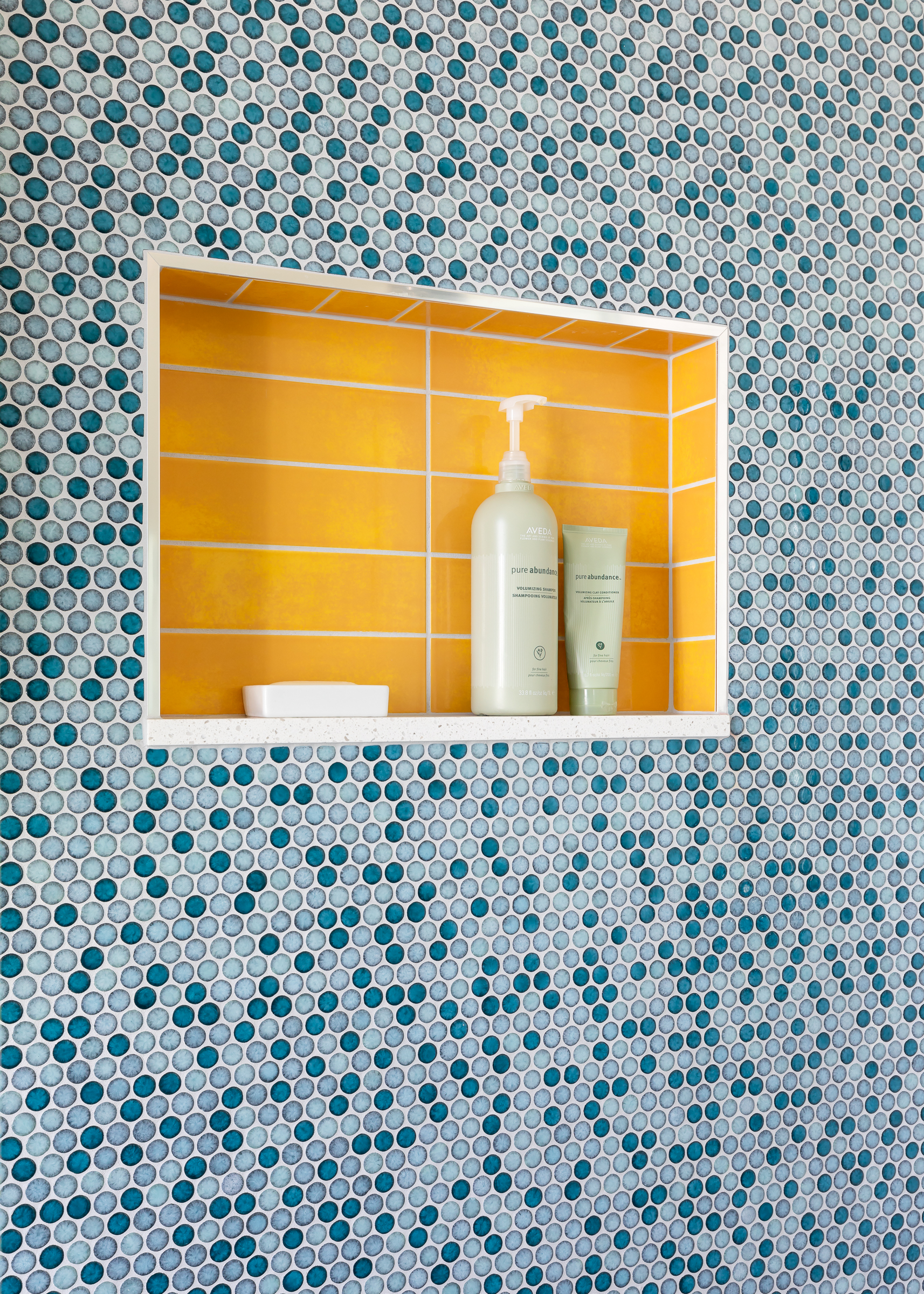Contractor or Designer – Which Comes First?
Contractor or Designer – Which Comes First?

Eager to get happy at home right now?
Get 10 tips for a happier home!
If you’re thinking about a remodel project, you are probably wondering whether you should hire your contractor or designer first. The challenge is that you don’t want to pay for a design if you then can’t afford to execute the project. At the same time, contractors will have a hard time pricing your project if you don’t have a design (many contractors won’t even come out for a site visit if you don’t have a design plan in hand). That means you *must* hire your designer first (or work out a detailed design yourself) before a contractor will take you seriously enough to bid on your project. Even if the contractors *will* come out and give you basic pricing, you won’t be able to compare apples to apples if you don’t have a design to hand them, since each contractor will be making different assumptions about the scope of the project.
So what to do?
(NOTE: If you *are* able to choose your contractor prior to hiring a designer, that will speed up the process as you can get on the contractor’s calendar more quickly once the design is complete. If you *have* chosen your contractor already, be sure to share that with your designer so they can coordinate and source cabinets, tile, etc where your contractor likes to shop.)
Assuming you haven’t chosen your contractor yet, here’s what we recommend:
1) Ask trusted friends for contractor referrals (or ask us! We are always happy to share our favorite resources!).
Check out their portfolios and online reviews, and narrow the list to 3-5 contractors. Give those contractors a call or email to get a general sense of how quick they are to respond and how effective they are at communicating with you. Go ahead and ask them about their general availability (do they usually schedule out 1 month? 6 months? A year?) and what ballpark they usually see for costs of a project of your size. Remember, this will be a VERY loose number and they’ll be making a lot of assumptions. Don’t eliminate any contractors based on price at *this* point. Rather, pay attention to the kinds of questions they ask, and how easy it is to communicate with them.
2) Design your project
Once you have your eye on at least three good contractors, design the layout for your new room and select all the materials for your project. The more specific you are during this step, the more specific and accurate the contractors can be when pricing your project in the next step. So go ahead and choose everything from your cabinets and counters to your lights, faucets, and cabinet knobs.
If you want to minimize your design investment until you get clearer pricing from your contractors, you *can* just work on the floor plan layout at this point. However, remember that the cost of the finishes and the complexity of the installation may significantly affect the final labor costs. There is a BIG difference between installing a simple subway backsplash over laminate counters with GE appliances and installing a complex mosaic backsplash over stone counters with SubZero appliances. So the more specific you are during this design phase, the more accurate the pricing will be from your contractors, and the more apples-to-apples the bids will be from contractor to contractor.
3) Get bids
Now that you have a design in hand, go back to the contractors you reached out to at the start, and have them price your project. Ideally, they will give you a flat-fee price (with a small range to account for those sneaky unknowns inside the walls). We don’t recommend a time-and-materials pricing structure for a well-defined remodel project if you can avoid it.
Once you have your bids you can make those apples-to-apples comparisons. Be sure to compare not only the price but what goes into the price. Check what allowances they include for finishes and fixtures (it should be consistent from contractor to contractor *if* you handed them a complete design) and how specific they are about what is included in the bid. Does it cover all subcontractor work too, or are some things listed to be paid separately? At the same time, keep an eye on how well they communicate with you, and how responsive they are. And be sure to call their references!! Check out this blog for more guidance on how to hire a great general contractor, and questions to ask their references.
4) Choose your contractor and get on their schedule
Now it’s time to make a decision about who will work on your home and get a start date on the calendar! Yea!
Important: if you only did the layout design in step two, be sure to complete the design now *before your demolition date*! Remodeling is stressful and you don’t need to be making design decisions during the upheaval of a remodel. So get to work nailing down (and ordering) those cabinets, counters, fixtures, etc before anyone lifts a hammer to your home.
I hope that helps give you a sense of what to do in what order as you plan for your remodel. It’s definitely a bit of a chicken-and-egg situation, and it will take some investment upfront before you’ll have complete answers on cost and feasibility. But if you come to the table with a finished design your contractors will take your project more seriously, and you’ll most certainly speed up the overall timeline for your remodel by thoroughly planning your project!
If you want some coaching to help get you on the right path, our Design Helplines are a great resource for your upcoming project! But whether you hire us or DIY, just be sure to go in with a plan!
May your home always be happy!


HI, I'M REBECCA WEST!
I’m an interior designer, author, podcaster, speaker, and coach to other designers. (Whew!) But I’m not your classic interior designer because, frankly, I don’t care if you buy a new sofa. I do care if your home supports your goals and feels like “you.” Remember, happy starts at home!
More From Seriously Happy Homes
Are you ready for a seriously happy home?
(Cue the confetti!)

Eager to get happy at home right now?



